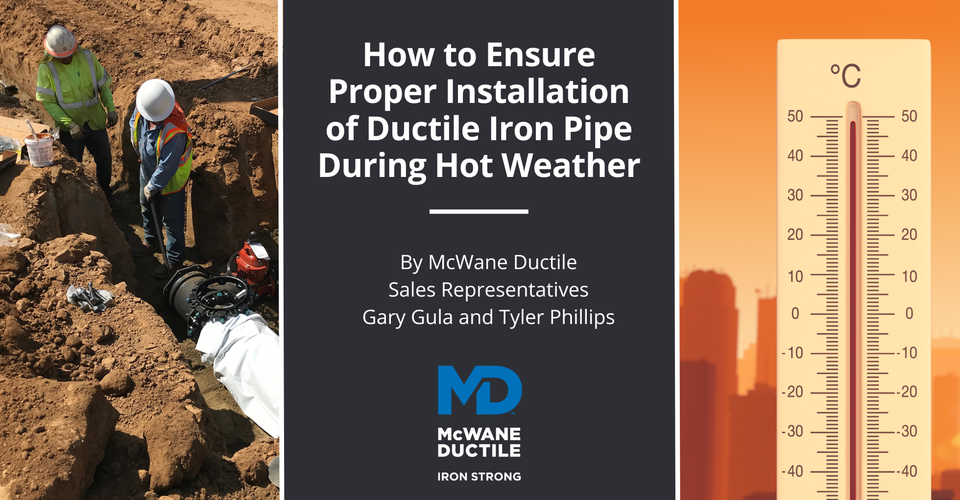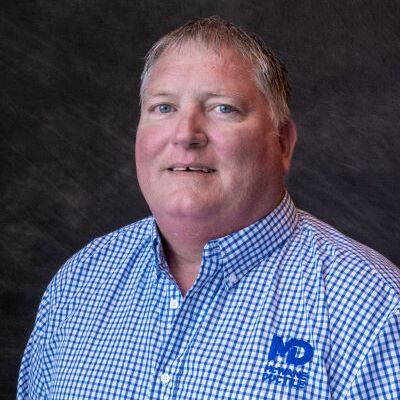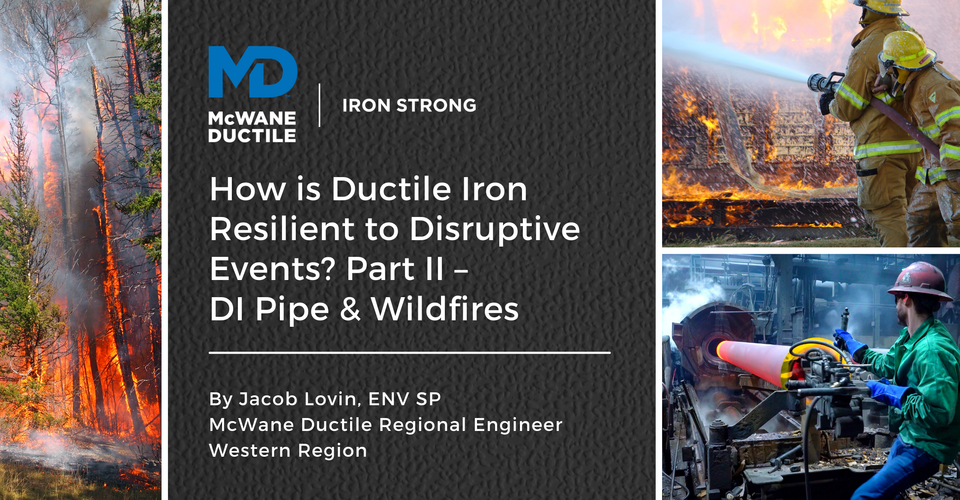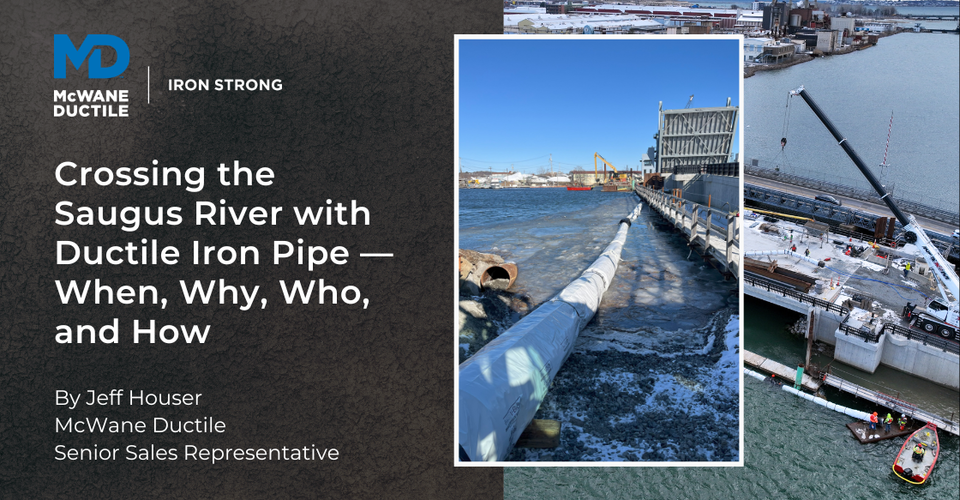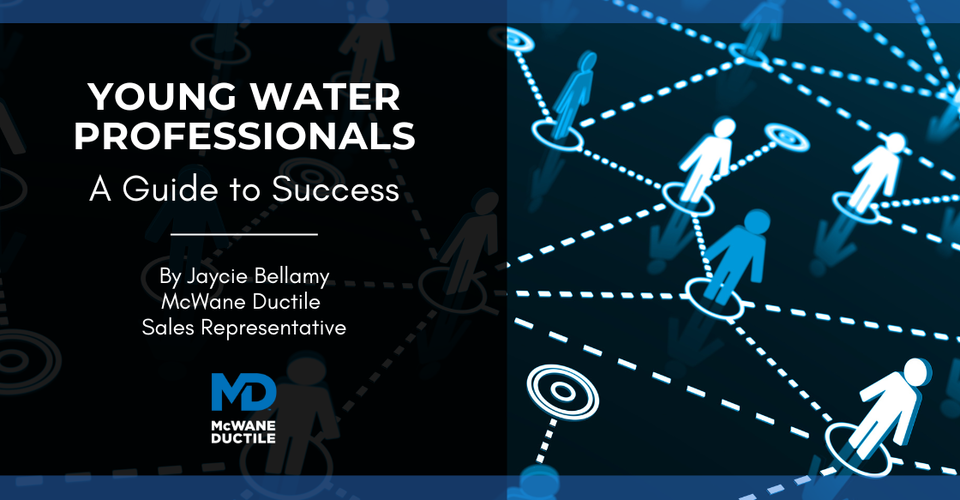As we welcome the longer days and nights associated with spring and summer, the outside temperatures across the country will no doubt rise as well. At some point throughout the spring, summer, and even fall months, nearly every town across the U.S. will likely experience unusually warmer and sometimes dangerous conditions. This #IronStrong Blog will cover some key points to remember when working in extreme heat and humidity on a Ductile iron pipe (DI pipe) installation project. These tips can apply regardless of whether you are in a traditionally cooler climate, rural town, or "asphalt jungle."
YOUR SAFETY COMES FIRST - PROTECTING YOU AND OTHERS
At McWane Ductile, we have a saying in our foundries and facilities with high-temperature indoor working conditions, “You are your brother’s and sister’s keeper.” This also applies in the field. Your team goes to work every day installing pipelines to ensure society has reliable drinking water, and the most important thing on a job site is your safety and those around you.
Employee safety can be affected by several factors during warmer months. “Any process or job site likely to raise the worker's deep core temperature (often listed as higher than 100.4 degrees F (38°C)) raises the risk of heat stress. Operations involving high air temperatures, radiant heat sources, high humidity, direct physical contact with hot objects, or strenuous physical activities have a high potential for inducing heat stress in employees. Heat disorders and life-threatening health effects from extreme heat include heat fatigue, rashes, heat exhaustion, and even heat stroke.”1
Team members must know their bodies and recognize predisposing factors, danger signs, and symptoms of heat stress that may affect themselves and others. Employees should understand job site emergency protocols if a co-worker falls ill due to heat stress. Download OSHA’s tip sheet by clicking on the link here and post it for your crews. Or download the brochure McWane Ductile created for its employees and their families with helpful tips to combat heat stress.
Staying well-hydrated and cool during elevated dewpoints will keep workers thinking clearly and safely while avoiding exhaustion and overheating. Another thing to remember is that when temperatures outside start to rise, so might tempers on the job site. Crews must take adequate breaks in shady, cool recovery areas to remain aware and focused. It’s recommended that crews start earlier in the morning and thus finish earlier to avoid working in the hottest part of the day. Understand labor laws in your respective state regarding the health and safety of your construction crews.
PROTECTING YOUR BODY:
Protecting your skin against direct sunlight is also very important. A bottle of SPF 30 or higher sunscreen, hats, neck gators, shaded safety glasses, and long-sleeve shirts will protect against sunburn and avoid serious skin issues now and later in life.
Ductile iron pipe, valves, and fittings sitting in the sun for more than 10 minutes can generate a surface temperature far above a touchable temperature if the skin is unprotected. Just think about how often your hands touch something on the job site baking in the sun throughout the day. Wearing appropriate gloves and long-sleeved shirts can protect against burns when maneuvering pipe and help reduce downtime and costs incurred from hand injuries.
In addition, the black exterior sealcoat on the surface of the DI pipe may become tacky during extreme temperatures. Wearing gloves and protective clothing can prevent the black, sticky paint on the skin.
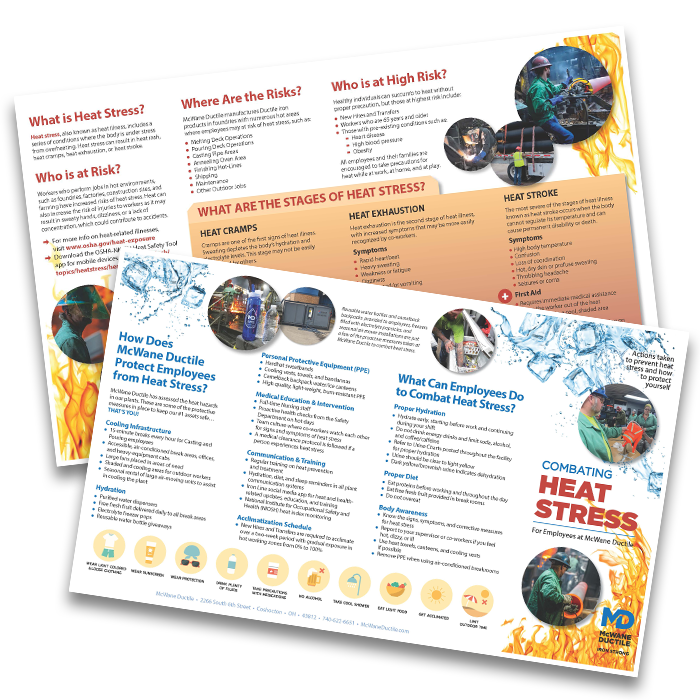
Combating heat stress is important at work, at home, or play, especially during warmer months. We’ve sent this informational flyer to McWane Ductile employees. Get a free copy for your family!
DOWNLOAD NOW
PROTECTING & INSTALLING THE PIPE
Ductile iron pipe and related materials should be stored in a suitable location on the job site. When storing DI pipe for extended periods, it may become necessary to cover or cap the ends. This added precaution will reduce the possibility of damage to your linings and coatings due to UV rays and help keep the gasket seat area of the bell clean and dry.
Due to extreme heat, you may also notice some "cracking and crazing" of the cement lining inside your pipe. Don't be alarmed by this, as it is not a defect. The crazing pattern will repair itself once the pipeline is filled with water through Autogenous Healing. To learn more about this, please click the link to another one of our informative blogs here: What is the Autogenous Healing of Ductile Iron Pipe?
Although sometimes tricky, avoid storing the pipe on open dirt where dust, mud, and other debris can easily enter it. Extreme heat may cause drought-like conditions, creating the potential for dust build-up in the gasket seat. And let’s not forget the storms.
“Thunderstorms typically develop in the warmer months of spring, summer, and fall, but they can occur at any time of the year over most of the U.S. Three basic ingredients are needed for thunderstorm development: moisture, an unstable atmosphere, and some way to start the atmosphere moving.”2 Always seek shelter during thunder/lightning storms.
If you experience both weather conditions—dusty drought followed by extreme storms—rainwater can settle inside the gasket seat area. When the water evaporates, a layer of dirt may form inside the gasket seat, which can cause displaced gaskets. It is paramount that the bells and spigots be wiped clean with water and a rag before gaskets are inserted. A good water supply on the job site can safeguard against a pressure test failure.
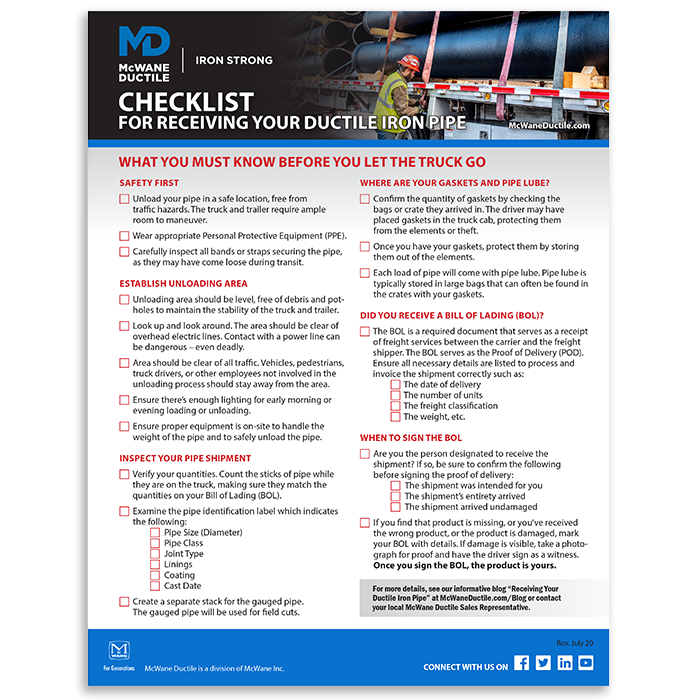
Before you let that truck full of Ductile iron pipe go, be sure to follow the guidelines on this free and handy checklist!
WHAT ABOUT POLYWRAP?
Research shows that polyethylene encasement, or polywrap, used for DI pipe installations generally holds up well in extreme heat and sunlight. Studies conducted by the Ductile Iron Pipe Research Association have found it remains effective at temperatures up to near 180°F but can soften or melt in the 200°-230°F range. However, if the poly wrap is on-site for an extended period before installation, proper care should be taken for storage. The AWWA C105 Standard notes that “prolonged exposure to sunlight will eventually deteriorate polyethylene film.”
CARING FOR & INSTALLING RUBBER GASKETS
Gaskets must be stored and treated with care during extreme heat to ensure the best performance. If possible, avoid leaving the gaskets in direct sunlight. When left in direct sunlight, gaskets can become softer and more pliable. This change in firmness can lead to potential installation issues, such as the gasket slipping and rolling out of the seating area. Storing the gaskets in the shade will also limit any possible adverse effects from interacting with the sun's UV rays.
Installing gaskets during extreme heat is the same as any other time of the year. The best practice is to keep the gaskets in a shaded, cool, dry place until needed. You should install the gaskets as the pipe is being laid in the trench, just before the next piece of pipe is inserted. This process keeps the gaskets from sitting against extremely hot pipe surfaces for too long. For additional information on the types of gaskets and how to store them, watch our video and download the handy tip sheet below.

Take care of critical components of your pipeline system! Avoid the harmful effects of improper gasket storage with our free and handy tip sheet.
PROTECTING & USING THE RIGHT PIPE LUBE
Again, the same care given to gaskets applies to pipe lubricant, which should be stored in a cool, shaded area before use. The typical functional temperature range for pipe lubricants is -10°F to 150°F, with a boiling point starting at >180°F to 220°F. Finally, the typical Flash Point for these pipe lubricants is at or greater than 220°F.
If lube looks separated, oily, puttied, or hard from old age or poor storage, dispose of it. Using pipe lube provided by the pipe supplier is always recommended, but obtaining new lube appropriate for the pipe from a local distributor is better than using old lube.
McWane Ductile ships pipe lubricant with every pipe load and, currently, only recommends using three different brands of pipe lubricant during installation: Phoenix 27-XL and Black Swan for general use, and NO-OX-ID Lubricant for subaqueous installations. These products have been thoroughly tested for their effectiveness in our Universal Test Facility located in Ohio.
LEARN MORE SAFETY & INSTALLATION TIPS
As with cold temperatures, manufacturing and installing Ductile iron pipe in hot temperatures presents its own challenges. During such conditions, our first concern is always the health of our foundry employees and the safety of waterworks crews in the field. Applying the recommendations in this article can help you avoid heat stress hazards, ensure the best material performance, and efficiently install your Ductile iron pipeline system in extreme heat. To learn more about combatting heat stress, check out our national award-winning blog and video by clicking the link here: How Do We Combat Heat Stress at McWane Ductile?
Need Assistance with Your Waterworks Project?
If you have any questions regarding your water or wastewater infrastructure project, be sure to reach out to your local McWane Ductile representative. Our team members have managed small and large water utility systems, served in engineering consulting firms, and bring decades of experience solving field issues involving pipeline construction and operation. From design to submittal to installation, we strive to educate and assist water professionals throughout the water and wastewater industry.
Check Out All Our Digital Offerings
REFERENCES
- U.S. Department of Labor, “Heat Stress Guide,” OSHA.gov, 2024, Accessed March 24, 2024. https://www.osha.gov/emergency-preparedness/guides/heat-stress
- National Weather Service, “Understanding Lighting: Thunderstorm Development,” Weather.gov, 2024, Accessed March 24, 2024. https://www.weather.gov/safety/lightning-thunderstorm-development

